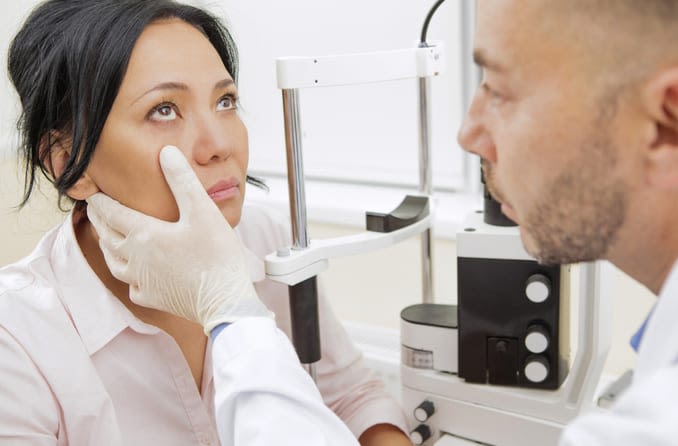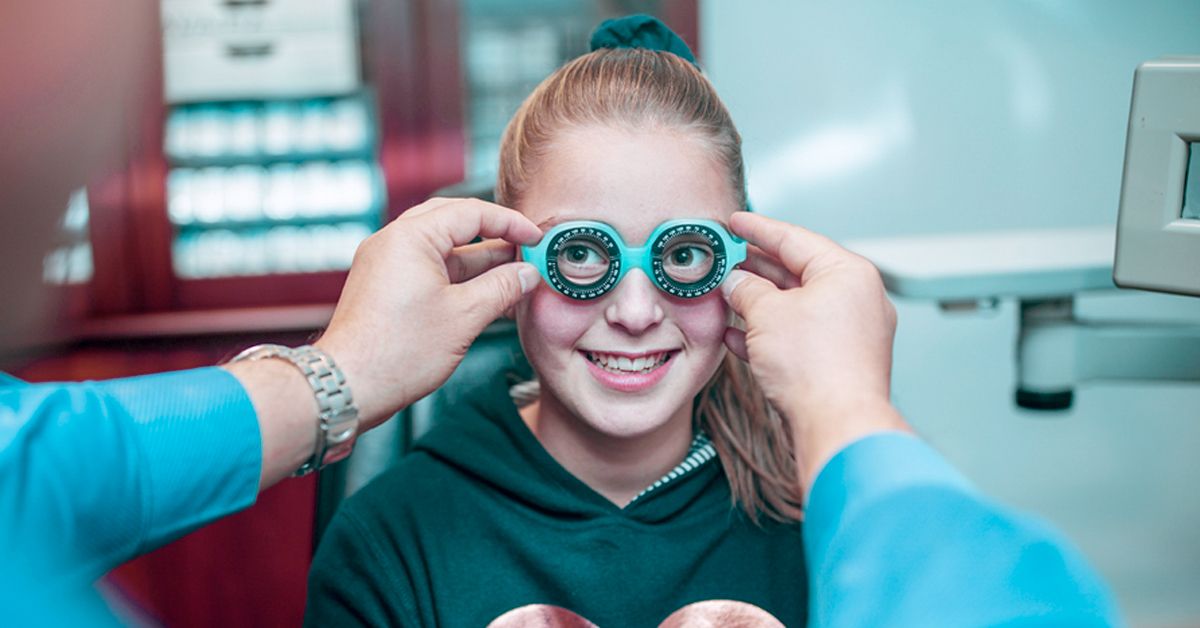The Importance of Regular Check-Ups with an Eye Doctor Optometrist
The Importance of Regular Check-Ups with an Eye Doctor Optometrist
Blog Article
Checking Out the current Technological Developments in Optometry and What They Mean for Optometrists
From the accuracy of Optical Comprehensibility Tomography to the nuanced understandings offered by AI-driven diagnostic devices, these innovations are setting new criteria in patient assessment and treatment. As these improvements penetrate the practice, optometrists are faced with the difficulty of accepting these devices to boost person outcomes.
Developments in Diagnostic Equipment
Progressing the area of optometry, advancements in analysis devices have actually transformed the method eye care experts examine and identify aesthetic problems and eye problems. The past years has actually seen considerable technical improvements, enabling even more thorough and exact examinations. Optical Comprehensibility Tomography (OCT), for instance, supplies high-resolution cross-sectional pictures of the retina, allowing for the early discovery of conditions such as glaucoma and age-related macular deterioration. This non-invasive imaging strategy has actually come to be indispensable in contemporary optometric technique.
An additional secret technology is the intro of advanced corneal topography systems, which map the surface curvature of the cornea with accuracy. These tools are especially beneficial for fitting get in touch with lenses and diagnosing corneal conditions. Moreover, electronic retinal imaging has transformed traditional ophthalmoscopy, providing comprehensive, panoramic views of the retina that help with extensive aesthetic exams.
The advancement of wavefront aberrometry has actually additionally been essential, allowing the analysis of refractive mistakes with unrivaled accuracy (Opticore Optometry). This innovation helps in tailoring corrective lenses and enhancing surgical results for refractive surgeries. Jointly, these analysis innovations equip optometrists to supply remarkable person treatment, making certain very early intervention and customized therapy approaches, ultimately boosting visual health and wellness results
AI in Patient Management
Structure on the structure of advanced analysis tools, the consolidation of fabricated knowledge (AI) in client monitoring stands for a transformative leap for optometry. AI systems are increasingly used to improve effectiveness, accuracy, and customization in client treatment. By analyzing huge amounts of information, AI can recognize patterns and anticipate prospective eye problems, allowing eye doctors to customize treatments more successfully. This capability is important in handling chronic eye illness such as glaucoma and diabetic retinopathy, where very early discovery and continuous monitoring are essential.
In addition, AI-driven platforms facilitate structured patient interactions and administrative processes. Automated scheduling, online examinations, and personalized follow-up plans not just enhance person complete satisfaction but additionally maximize time monitoring for practitioners. These systems can triage patients based upon the necessity of their problems, making sure that those in vital need get timely focus.
Additionally, AI improves decision-making by offering optometrists with evidence-based recommendations and therapy pathways. By incorporating information from electronic health records, AI tools provide insights that educate professional choices, decreasing the threat of errors and improving patient results. As AI continues to progress, its role in patient monitoring will likely expand, reshaping the landscape of optometric care.
Breakthroughs in Retinal Imaging
In the world of optometry, retinal imaging has actually observed exceptional technical improvements that are boosting diagnostic abilities and person care. Technologies such as Optical Comprehensibility Tomography (OCT) and fundus photography have transformed how optometrists analyze the retina and envision. OCT, in certain, gives high-resolution, cross-sectional photos of the retina, enabling the in-depth assessment of its layers. This capability is important for very early detection and management of conditions like glaucoma, diabetic person retinopathy, and age-related macular degeneration.
Improved imaging methods like OCT angiography are further refining analysis accuracy. This non-invasive strategy maps blood flow in the retina, providing crucial insights into vascular wellness without the requirement for dye shots. Furthermore, flexible optics technology is being integrated into retinal imaging systems to remedy ocular aberrations, supplying unmatched image quality. Such advancements help with the recognition of min retinal modifications that could signify disease development.
In addition, improvements in expert system are boosting retinal imaging by making it possible for automated analysis of huge datasets. These systems help optometrists in determining patterns a sign of pathology, consequently enhancing analysis precision and performance. Collectively, these advancements are transforming retinal imaging right into a cornerstone of modern-day eye care, improving end results and broadening therapeutic opportunities.
Teleoptometry's Expanding Duty
Teleoptometry is progressively becoming an essential element of eye treatment, driven by developments in digital interaction and diagnostic devices. As optometry accepts electronic transformation, teleoptometry promotes remote assessments, permitting eye doctors to prolong their services beyond standard borders. This is especially useful in rural and underserved areas where accessibility to visit this site right here specialized eye treatment is usually limited. By leveraging high-resolution video conferencing and progressed retinal imaging, optometrists can carry out comprehensive eye tests from afar, making certain prompt medical diagnosis and treatment.
The integration of expert system (AI) further boosts teleoptometry, making it possible for the evaluation of visual data and aiding in the click here now detection of eye conditions such as glaucoma and diabetic person retinopathy. AI-powered algorithms can swiftly interpret complex imaging data, offering optometrists with valuable insights that reinforce professional decision-making.
Moreover, teleoptometry supports connection of treatment via smooth integration with electronic health records (EHRs), enabling optometrists to keep extensive client backgrounds. This ensures that patients obtain customized and constant care even when speaking with different professionals.
Despite these benefits, difficulties stay, including guaranteeing information security and managing individual assumptions. Teleoptometry stands for a substantial stride towards more accessible, reliable, and patient-centered eye care. As innovation advances, its duty is poised to expand even more.

Future Patterns in Eye Care
A myriad of cutting-edge fads is established to improve the future of eye care, driven by technical innovations and the evolving demands of people. One substantial trend is the assimilation of fabricated knowledge (AI) in diagnostics, which promises to improve the precision and efficiency of eye examinations. AI algorithms can evaluate large amounts of information from retinal pictures, possibly finding problems like diabetic retinopathy and glaucoma earlier than traditional methods.
Moreover, personalized medication is getting grip in optometry, with genetic screening notifying customized therapy strategies. This strategy intends to optimize patient end results by customizing interventions to individual genetic profiles. Wearable modern technology, such as wise get in touch with lenses, is additionally coming up, supplying real-time surveillance of intraocular stress or glucose degrees, hence supplying continuous understandings into systemic and ocular health and wellness.
The adoption of enhanced fact (AR) and online reality (VR) in training and patient education is another arising trend. These modern technologies provide immersive experiences that can boost understanding and skills both for clients and eye doctors. As these trends progress, optometrists need to remain abreast of technological innovations to supply advanced treatment, ensuring enhanced individual outcomes and complete satisfaction in the vibrant landscape of eye treatment.
Verdict

Jointly, these analysis innovations encourage eye doctors to deliver exceptional client care, ensuring very early intervention and customized treatment strategies, inevitably enhancing aesthetic health and wellness outcomes.

As these innovations proceed to evolve, optometrists need to adjust and incorporate them into method, inevitably optimizing process effectiveness and boosting the standard of eye care provided to individuals.
Report this page